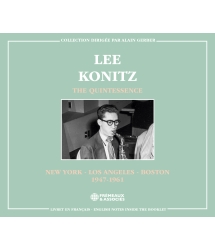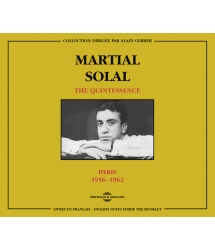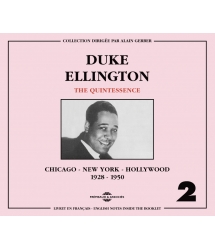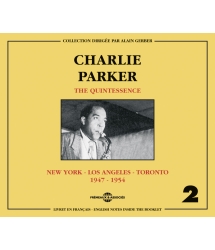- Our Catalog
- Philosophy
- Philosophers of the 20th century and today
- History of Philosophy (PUF)
- Counter-History and Brief Encyclopedia by Michel Onfray
- The philosophical work explained by Luc Ferry
- Ancient thought
- Thinkers of yesterday as seen by the philosophers of today
- Historical philosophical texts interpreted by great actors
- History
- Books (in French)
- Social science
- Historical words
- Audiobooks & Literature
- Our Catalog
- Jazz
- Blues
- Rock - Country - Cajun
- French song
- World music
- Africa
- France
- Québec / Canada
- Hawaï
- West Indies
- Caribbean
- Cuba & Afro-cubain
- Mexico
- South America
- Tango
- Brazil
- Tzigane / Gypsy
- Fado / Portugal
- Flamenco / Spain
- Yiddish / Israel
- China
- Tibet / Nepal
- Asia
- Indian Ocean / Madagascar
- Japan
- Indonesia
- Oceania
- India
- Bangladesh
- USSR / Communist songs
- World music / Miscellaneous
- Classical music
- Composers - Movie Soundtracks
- Sounds of nature
- Our Catalog
- Youth
- Philosophy
- News
- How to order ?
- Receive the catalog
- Manifesto
- Dictionnary











- Our Catalog
- Philosophy
- Philosophers of the 20th century and today
- History of Philosophy (PUF)
- Counter-History and Brief Encyclopedia by Michel Onfray
- The philosophical work explained by Luc Ferry
- Ancient thought
- Thinkers of yesterday as seen by the philosophers of today
- Historical philosophical texts interpreted by great actors
- History
- Books (in French)
- Social science
- Historical words
- Audiobooks & Literature
- Our Catalog
- Jazz
- Blues
- Rock - Country - Cajun
- French song
- World music
- Africa
- France
- Québec / Canada
- Hawaï
- West Indies
- Caribbean
- Cuba & Afro-cubain
- Mexico
- South America
- Tango
- Brazil
- Tzigane / Gypsy
- Fado / Portugal
- Flamenco / Spain
- Yiddish / Israel
- China
- Tibet / Nepal
- Asia
- Indian Ocean / Madagascar
- Japan
- Indonesia
- Oceania
- India
- Bangladesh
- USSR / Communist songs
- World music / Miscellaneous
- Classical music
- Composers - Movie Soundtracks
- Sounds of nature
- Our Catalog
- Youth
- Philosophy
- News
- How to order ?
- Receive the catalog
- Manifesto
- Dictionnary
LIVE IN PARIS 18 AVRIL 1961 (CONTIENT INÉDITS)
MONK THELONIOUS
Ref.: FA5653
EAN : 3561302565323
Label : Frémeaux & Associés
Total duration of the pack : 1 hours 57 minutes
Nbre. CD : 2
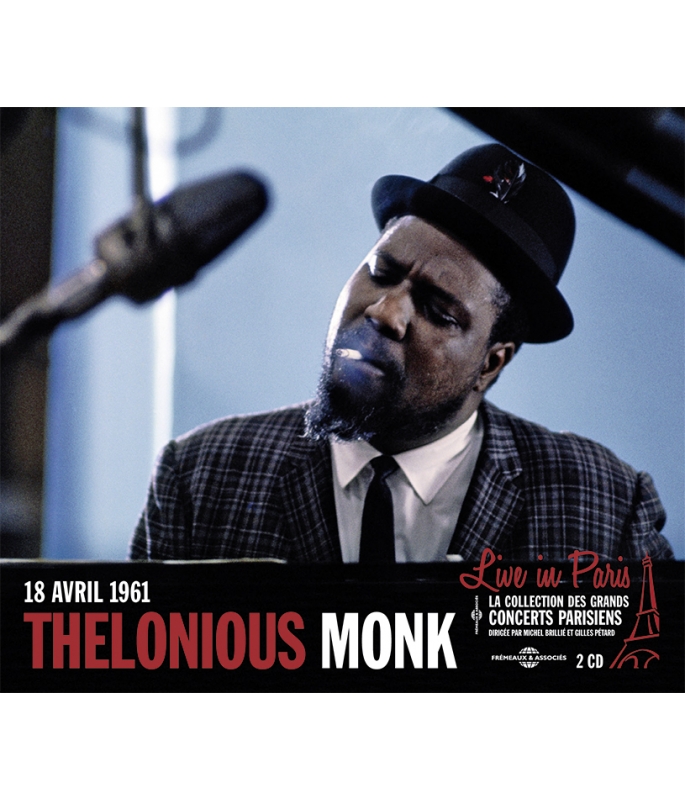
LIVE IN PARIS 18 AVRIL 1961 (CONTIENT INÉDITS)
LIVE IN PARIS 18 AVRIL 1961 (CONTIENT INÉDITS)
Pianist Thelonious Monk was one of the most in uential pianists in jazz history. From the Forties to the Sixties he was a central gure whose unique sense of composition and improvisation placed him in the avant-garde of the bebop and then hard bop movements in jazz. This set was recorded in Paris in April 1961, during Monk’s first triumphant European tour that led to many live recordings, and is made up of tapes from radio broadcasts, some of which have never been available on disc before now. Marc Benham, himself a great contemporary pianist, has put together a wonderful synthesis of this concert for the booklet included with the music. Patrick Frémeaux
The Live in Paris collection by Michel Brillié allows listeners to hear previously-unreleased recordings (made at concerts and private- or radio-sessions) by the great 20th stars in jazz, rock & roll and song. These “live” takes, and the artists’ rapport with their audiences, gives these performances an additional soul and sensibility in counterpoint to the rigorous demands of studio recordings. Particular care was taken when restoring the sound of these tapes in order to meet CD standards while preserving the original colours of the period. Patrick FRÉMEAUX & Gilles PÉTARD
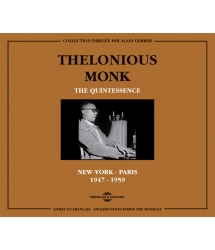
NEW-YORK - PARIS 1947-1959
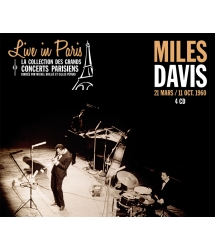
LIVE IN PARIS - 21 MARS / 11 OCTOBRE 1960
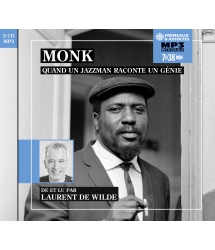
De et lu par Laurent de Wilde



-
PisteTitleMain artistAutorDurationRegistered in
-
1EvidenceThelonious Monk00:06:471961
-
2NuttyThelonious Monk00:05:271961
-
3Monk's MoodThelonious Monk00:07:491961
-
4Bemsha SwingThelonious Monk00:04:511961
-
5Jackie-IngThelonious Monk00:10:081961
-
6I'M Getting Sentimental Over YouThelonious MonkNed Washington00:08:221961
-
7Crepuscule With NellieThelonious Monk00:02:381961
-
8Well You Needn'TThelonious Monk00:11:261961
-
PisteTitleMain artistAutorDurationRegistered in
-
1Rhythm-A-NingThelonious Monk00:10:411961
-
2Body SoulThelonious MonkR. Sour00:02:541961
-
3I Mean YouThelonious Monk00:11:081961
-
4April In ParisThelonious MonkE.Y. Harburg00:01:331961
-
5Off MinorThelonious Monk00:11:291961
-
6HackensackThelonious Monk00:09:451961
-
7Just A GigoloThelonious MonkJulius Brammer00:02:341961
-
8EpistrophyThelonious Monk00:06:321961
-
9Body Soul (Reprise)Thelonious MonkRobert Sour00:03:551961
Monk Live FA5653
THELONIOUS MONK
18 avril 1961
Live in Paris
La collection des grands concerts parisiens
Dirigée par Michel Brillié et Gilles Pétard
2 CD
Thelonious Monk est l’un des pianistes les plus marquants de l’histoire du jazz. Figure centrale du jazz des années 1940 à 1960, il est à l’avant-garde des mouvements bebop puis hard bop avec un sens unique de la composition et de l’improvisation. Enregistré à Paris en avril 1961, durant la triomphale première tournée européenne de l’artiste (qui a débouché sur la publication de nombreux albums live), ce coffret présente des bandes issues de la radiodiffusion dont certaines n’ont jamais été publiées sur disque. Marc Benham, grande figure du piano solo contemporain offre au livret de cet enregistrement, une formidable synthèse de ce concert.
Patrick Frémeaux
Pianist Thelonious Monk was one of the most influential pianists in jazz history. From the Forties to the Sixties he was a central figure whose unique sense of composition and improvisation placed him in the avant-garde of the bebop and then hard bop movements in jazz. This set was recorded in Paris in April 1961, during Monk’s first triumphant European tour that led to many live recordings, and is made up of tapes from radio broadcasts, some of which have never been available on disc before now. Marc Benham, himself a great contemporary pianist, has put together a wonderful synthesis of this concert for the booklet included with the music.
Patrick Frémeaux
La collection « Live in Paris », dirigée par Michel Brillié, permet de retrouver des enregistrements inédits (concerts, sessions privées ou radiophoniques), des grandes vedettes du jazz, du rock & roll et de la chanson du XXe siècle. Ces prises de son live et la relation avec le public apportent un supplément d’âme et une sensibilité en contrepoint à la rigueur appliquée lors des enregistrements studio. Une importance singulière a été apportée à la restauration sonore des bandes pour convenir aux standards CD tout en conservant la couleur d’époque.
Patrick FRÉMEAUX & Gilles PÉTARD
The Live in Paris collection by Michel Brillié allows listeners to hear previously-unreleased recordings (made at concerts and private- or radio-sessions) by the great 20th stars in jazz, rock & roll and song. These “live” takes, and the artists’ rapport with their audiences, gives these performances an additional soul and sensibility in counterpoint to the rigorous demands of studio recordings. Particular care was taken when restoring the sound of these tapes in order to meet CD standards while preserving the original colours of the period.
Patrick FRÉMEAUX & Gilles PÉTARD
Thelonious Monk Live in Paris 18 avril 1961
Par Marc Benham
Aussi loin que je m’en souvienne, la musique de Thelonious Monk m’a toujours hanté.
Cela avait commencé par un poster dans ma chambre d’enfant, un grand format de la pochette de l’album Monk’s Music de 1957, représentant ce grand bonhomme à l’air terriblement classe avec sa casquette, ses lunettes noires et un air agressif, mais assis dans une toute petite carriole rouge vif.
Puis il y a eu le Round’ Midnight, piste bonus du disque Misterioso avec ce son de sax ténor si chaleureux de Johnny Griffin mêlé au fameux toucher de piano de Monk, pour moi aussi âpre que lyrique. Première sensation de dissonance à la fois douloureuse et agréable.
Assez fleur bleue à l’adolescence, je tombais amoureux d’une fille différente tous les quinze jours, mais c’était toujours avec ce fidèle Round’ Midnight, romantiquement vissé dans mon casque de Walkman.
Puis il y a tous les autres souvenirs avec Monk, J’ai raté l’entrée au Conservatoire sur Off Minor, enregistré Green Chimneys sur mon premier album auto-produit, rejoué Round’ Midnight en piano solo à la Beethoven Haus de Bonn l’année dernière.
Ses compositions sont tellement hors du commun dans leurs harmonies, leurs architectures et si parfaites et ludiques à la fois qu’elles font partie intégrante du répertoire des standards de jazz, juste à coté des chansons issues des comédies musicales de Broadway, et elles font constamment l’objet d’hommages et de réinterprétations par tous les musiciens de jazz. De tous horizons d’ailleurs, cela semble universel : certains n’aiment que le jazz traditionnel, d’autres uniquement le bebop, d’autres encore ne jureront que par le free jazz, mais tous s’accordent sur le plaisir d’écouter et de rejouer Monk.
Alors que cette équipe de musiciens - constituée de John Ore à la contrebasse, Frankie Dunlop à la batterie, Charlie Rouse au sax ténor et Monk au piano - n’a été formée qu’en 1960, donc un an avant ce live à l’Olympia, elle me semble pourtant avoir été la formation de Monk la plus aboutie en terme de groupe.
L’osmose de celui-ci est telle qu’elle peut faire penser à celle d’un quatuor classique, dont seules des répétitions quotidiennes d’arrache-pied additionnées à des concerts très récurrents per‑mettent d’accéder non seulement au véritable son de groupe tant recherché, mais également à autant de réflexes musicaux en commun.
Cela n’aurait d’ailleurs peut-être pas été possible avec d’autres musiciens plus « starifiés » comme Art Blakey ou Sonny Rollins, toujours en tournée et probablement moins disponibles pour le travail de fond autour d’un leader.
Pour preuve, ce groupe semble avoir parfaitement apprivoisé la « folie » musicale de son chef et s’articule impeccablement autour de lui sans pour autant enlever à la notion de groupe et de son de groupe. Un vrai travail d’équipe.
Tant et si bien que même sans piano (solos de contrebasses minimalistes, passages de solo de sax seul avec la section rythmique par exemple), on croit l’entendre pourtant.
Tout à sans doute été dit sur le génie du jeu de piano de Monk, et encore je n’évoque ici « que » son talent d’interprète, qui homogénéise complètement ses compositions tout comme ses re-visites de standards par son langage si singulier. Un jeu que je trouve, lorsqu’il est accompagné de contrebasse et batterie, à la fois sauvage, non dans le sens « peu académique », mais plutôt dans un sens « animal », par les ponctuations subreptices d’une main gauche qui choisit avec une seule note, un seul doigt, donnant juste ce qu’il faut d’indication harmonique, tout en laissant la liberté suffisante à la contrebasse de dévoiler le reste des fondations.
Ses influx de main gauche, rythmiques également, m’apparaissent comme des sortes de pêches de grosse caisse, typiques à leur époque, celle du be-bop, ainsi que le batteur Kenny Clarke (dont on dit qu’il avait inventé ce style) les sortait de leur rôle métronomique pour en faire de surprenantes syncopes qui relançaient en permanence la machine, garantissant ainsi la tension dans le morceau.
Cette même main gauche de Monk réalisant tout autant par moments des accords, mais aussi des formules phrasées bien plus complexes, faisant souvent partie intégrante de la charpente de ses compositions ou de ses arrangements, quand celui-ci ne partait pas carrément en stride, ce style festif et virtuose, consistant à faire jouer à la main gauche une pompe avec basses et accords alternativement, dévoilant seulement par endroits, ses premières amours secrètes pour le style de ses prédécesseurs. Il ne reste plus à la main droite qu’à compléter une harmonie, exposer à demi une mélodie avec Charlie Rouse, ou encore improviser glorieusement dans son style fou.
Le répertoire est parfaitement choisi et oscille entre compositions efficaces et standards de jazz connus, le tout ponctué de quelques ballades et autres morceaux en piano solo histoire de calmer le jeu, comme son clin d’œil au public francilien ce soir là, April In Paris.
Monk et son quartet donnent ce concert à l’Olympia dans le cadre de ce qui s’avère être sa première véritable tournée européenne, en 1961, une tournée en tant que jazzman désormais célèbre dont les compositions sont maintenant connues par les aficionados européens, ce qui explique l’accueil très chaleureux et bienveillant du public Français, qu’on entend lui aussi avec grand plaisir grâce au son incroyable de ce double album, fort heureusement réédité dans son intégralité par Frémeaux & Associés et Body & Soul. Merci à eux !
Marc BENHAM
© FRÉMEAUX & ASSOCIÉS 2016
Thelonious Monk Live in Paris, April 18, 1961
By Marc Benham
For as long as I can remember, the music of Thelonious Monk has haunted me. It started with a poster in my room when I was a child, a large-scale reproduction of the sleeve of Monk’s Music, the 1957 album; it showed this big man with a fabulously classy look — chequered golf cap, dark glasses, an attitude — but seated in a tiny bright-red cart.
And then there was ‘Round Midnight, the bonus track on the Misterioso record, with Johnny Griffin’s warm sax sound mingling with Monk’s famous piano touch. To me it sounded as bitter as it was lyrical: the first feeling of dissonance, painful and pleasant at the same time. I was something of a romantic as a teenager — I fell in love with a different girl every two weeks — but I always had that faithful ‘Round Midnight plugged sentimentally into the ear-buds of my Walkman.
There are other memories of Monk to share: I flunked the entrance exam for the Conservatoire with Off Minor, recorded Green Chimneys for my first self-produced album, and I played ‘Round Midnight last year again, solo on piano, at the Beethoven Haus in Bonn.
His compositions are so uncommon in their harmonies and architectures, and at the same time so perfect and so playful, that they form an integral part of the repertoire’s jazz standards, up there alongside songs from Broadway musicals, and they are constantly the subject of tributes and new readings by every musician who plays jazz. Actually, they are musicians of all horizons, because it seems to be universal. There are some who like only traditional jazz, others like only bebop, and still others swear by free jazz alone, but all of them agree on one thing: it’s a pleasure to listen to Monk and play him again.
While this team of musicians — comprised of John Ore on double bass, Frankie Dunlop on drums, Charlie Rouse on tenor sax and Monk on piano — wasn’t put together until 1960 (in other words, a year before this live recording at the Olympia), to me it sounds like Monk’s most complete ensemble, in “group” terms. The osmosis of this one is such that it makes you think of a classical quartet, one whose frantic daily rehearsals alone, plus its recurrent concerts, enable it to attain not only that authentic, much sought-after “group sound”, but also so many musical reflexes that they have in common.
Incidentally, perhaps that wouldn’t be possible with more “big name” musicians present, like Art Blakey or Sonny Rollins, always away on tour somewhere and probably less available for the groundwork laid down around a leader.
As proof, this group seems to have perfectly tamed the musical “folly” of its chief, and it articulates itself impeccably around him without detracting from that “group” notion and sound. This is genuine teamwork. So much so, in fact, that, even without the piano — minimalist bass solos, the solo contributions from the sax alone with the rhythm section, for example — you still believe you can hear it.
Probably everything has been said about the genius of Monk as a piano player, and here I’m referring “only” to his talent as a performer, which completely homogenizes both his compositions and his new readings of standards, by means of a language that is very particular. I find his playing, when he’s accompanied by the bass and the drums, simultaneously wild — not in the “hardly academic” sense, but rather, wild like an animal can be —, in the surreptitious punctuations provided by a left hand that makes its choice with a single note, a single finger, providing just the right harmonic guidance, while leaving the bass with enough freedom to unveil the rest of the foundations.
His impulsive left-hand touches, also rhythmical, remind me of the percussive bass drum hits that were typical of the period, the bebop days, when drummer Kenny Clarke (who is said to have invented this style) pulled them out of their metronomic role and transformed them into astonishing syncopations that continuously spurred on the machine and, in so doing, guaranteed the tension of the piece.
At times you have that same Monk left hand providing not only chords, but also phrased formulas that have much more complexity, often as integral parts of the framework for his compositions or arrangements. Unless he’s already into a stride exercise, that festive, virtuoso style that consists of making the left hand pump out bass notes and chords in turn, here and there allowing only glimpses of his secret first loves for the style of his predecessors. The only thing that remains is for the right hand to complete a harmony, to half-state a melody with Charlie Rouse, or else to execute a glorious improvisation in that crazy style of his.
The repertoire is perfectly chosen, oscillating between efficient compositions and well-known jazz standards, and punctuated with a few ballads and other solo piano pieces to bring moments of respite, like his veiled acknowledgement to the audience that night with April In Paris.
Monk and his quartet were giving this concert at the Olympia in the context of what would turn out to be his first veritable tour in Europe: 1961 saw him touring as a jazzman who was now a celebrity, a musician whose compositions were known to European aficionados; it explains the heat in the welcome that the French give him here. And that is also a pleasure to hear, thanks to the incredible sound of this double album, which gives us the chance to listen to that entire concert. Thank you, Frémeaux & Associés and Body & Soul!
Marc BENHAM
Adaptated into English by Martin DAVIES
© FRÉMEAUX & ASSOCIÉS 2016
CD 1
1. Evidence (Thelonious Monk) 6’47
2. Nutty (Thelonious Monk) 5’27
3. Monk’s Mood (Thelonious Monk) 7’49
4. Bemsha Swing (Thelonious Monk 4’51
5. Jackie-ing (Thelonious Monk) 10’08
6. I’m Getting Sentimental Over You (Ned Washington - George Bassman) 8’22
7. Crepuscule With Nellie (Thelonious Monk) 2’38
8. Well You Needn’t (Thelonious Monk) 11’26
CD 2
1. Rhythm-a-Ning (Thelonious Monk) 10’41
2. Body & Soul (Robert Sour / Frank Eyton - Johnny Green / Edward Heyman) 2’54
3. I Mean You (Coleman Hawkins / Thelonious Monk) 11’08
4. April in Paris (Vernon Duke / E. Y. Harburg - Vernon Duke) 1’33
5. Off Minor (Thelonious Monk) 11’29
6. Hackensack (Thelonious Monk) 9’45
7. Just a Gigolo (Julius Brammer / Irving Caesar - Leonello Casucci) 2’34
8. Epistrophy (Thelonious Monk) 6’32
9. Body & Soul (reprise) (Robert Sour / Frank Eyton - Johnny Green / Edward Heyman) 3’55
Recorded by: Europe N°1 Technical Staff
Recording Date: April 18, 1961
Recording Place: Olympia Theater, Paris, France
Produced by: Harry Colomby, Daniel Filipacchi & Frank Ténot
Personnel:
Thelonious Monk Piano • Charlie Rouse Tenor saxophone
John Ore Bass • Frankie Dunlop Drums
Dedicated to Claude Boquet, Bill Dubois, Jean Claude, Philippe Moch and the gang
La collection Live in Paris :
Collection créée par Gilles Pétard pour Body & Soul et licenciée à Frémeaux & Associés
Direction artistique et discographie : Michel Brillié, Gilles Pétard
Coordination : Augustin Bondoux
Conception : Patrick Frémeaux, Claude Colombini
Fabrication et distribution : Frémeaux & Associés
